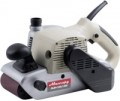Power consumption
The power consumed by the grinder during operation. Usually more than the output (useful) power (see above) due to losses during the conversion of energy from electrical to mechanical. However, the general patterns in this case are the same: a more powerful tool, on the one hand, is usually more performant, on the other hand, it is heavier, larger and more expensive. In addition, the total electricity consumption depends on this indicator; however, grinders, even the most powerful ones, consume relatively little energy, and difficulties can arise only when connecting a high-performance professional tool to weak electrical wiring.
Note that it is much easier to determine the consumed power than the useful one; therefore, only this parameter is often indicated in the characteristics, without specifying the useful power. In general, it is quite possible to compare grinders of the same type using it (see above): a modern tool has approximately the same efficiency, and in most cases the useful power values bare related in the same way as the consumed values.
Belt speed
Belt speed provided by the grinder. For more information about belt units, see "Type". In this paragraph, both one value and a range can be given — if the device has a speed control (see "Additionally — Speed regulator").
Other things being equal (primarily the same belt width), a higher speed has a positive effect on productivity. On the other hand, to ensure such a speed, a more powerful engine is needed, which accordingly affects the weight, price and energy consumption of the entire tool. In addition, the low belt speed contributes to accuracy: the chance of removing excess material is reduced. So it’s definitely worth looking specifically for a “fast” grinder only if it is to be used often and for large volumes of work. In other cases, a slower model may well be the best option. More detailed recommendations on this matter (including for different materials and types of work) can be found in special sources.
Weight
The total weight of the grinder; for battery models (see "Power Source"), usually, it is indicated without taking into account the battery.
This indicator has two meanings. On the one hand,
light weight has a positive effect on manoeuvrability and reduces fatigue during work — especially when processing vertical surfaces and ceilings, as well as in other situations where the tool has to be held on weight. On the other hand, for grinders with a vibrational principle of operation (see "Type"), used for processing horizontal surfaces, a significant weight is considered optimal: it allows the tool to fit closer to the material being processed, and also contributes to stability and retention. So when choosing such a model by weight, it is worth considering the features of its intended application.

